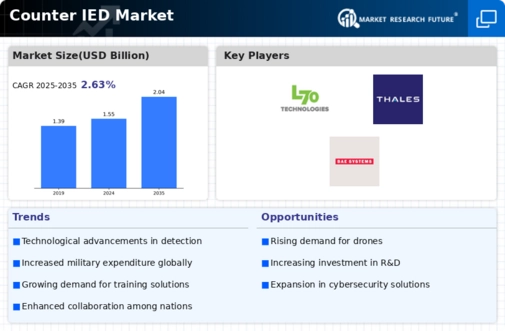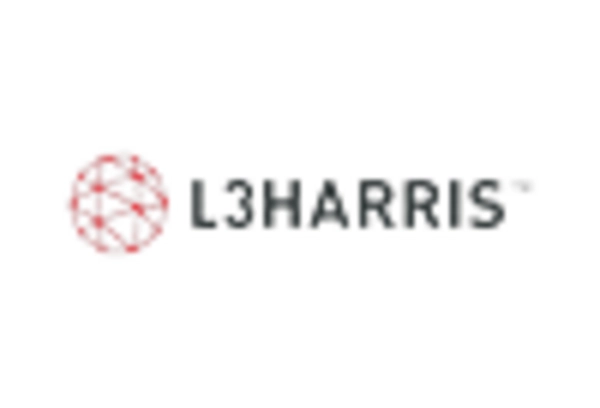Leading market players are spending a lot of money on R&D to diversify their product offerings, which will spur further growth in the counter IED market. Important market developments include new product releases, contractual agreements, mergers and acquisitions, greater investments, and collaboration with other organizations. Market participants are also engaging in a number of strategic actions to increase their footprint. The counter IED industry needs to provide affordable products if it wants to grow and thrive in a more competitive and challenging market environment.
One of the primary business strategies employed by manufacturers in the worldwide counter IED industry to assist customers and expand the market sector is local manufacturing to reduce operational costs. The counter IED industry has recently given medicine some of its most important benefits. Elbit Systems Ltd. (Israel), Northrop Grumman Corporation (US), L3 Technologies (US), Thales Group (France), Harris Corporation (US), Lockheed Martin Corporation (US), and other major players in the counter IED market are investing in research to improve their competitiveness.
The Sierra Nevada, which translates to "mountain range covered in snow," is a group of mountains in Spain's Andalusian province of Granada. It contains Mulhacén, which rises 3,479 meters (11,414 feet) above sea level and is the highest peak in mainland Spain. In a region along the Mediterranean Sea that is mostly recognized for its mild temperatures and ample sunshine, it is a well-liked tourist attraction because of its high peaks, which make skiing possible in one of Europe's most southern ski resorts. The city of Granada, as well as Almera and Málaga, are located at its slopes.
In June 2020, The Degraded Visual Environment Pilotage System (DVEPS) for the U.S. Special Operations Command OCOM and particular U.S. Army aircraft was procured, delivered, and supported by Sierra Nevada Corporation (SNC) under a production contract with multiple delivery orders.
L3Harris Technologies, Inc. is an American technology firm that also serves as a defense contractor and a provider of information technology services. It makes C6ISR systems and products as well as wireless gear, tactical radios, avionics and electronic systems, night vision gear, and both terrestrial and spaceborne antennas for use in the public, private, and commercial sectors.
They are experts in electronic warfare, microwave weapons, and surveillance solutions. On June 29, 2019,it was created by the union of Harris Corporation and L3 Technologies (formerly L-3 Communications), and it was projected to become the sixth-largest defense contractor in the United States. In August 2019, To supply electronic warfare (EW) systems for the international F-16, L3 Harris Technologies, Inc. was awarded a US$ 400 Mn increase to the single-award IDIQ contract. These strategic developments will probably aid the company in increasing sales.


















Leave a Comment